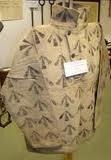Each week I'm going to post a Hollywood Icon from a different era and how to get their look.
About the star
The 1920s was the era of silent movies, and Swedish star Greta Garbo was one of the biggest names in Hollywood during this time. Able to speak very little English, Garbo was able to captivate audiences in her silent movies and quickly became the go-to-girl at MGM.
The 1930s brought with it a huge change in cinema, and the introduction of speaking films saw the popularity of silent movies dwindle. Garbo had to make the transition if she was to continue as a leading lady in Hollywood, and that she did. Starring in Anna Christie in 1930, the film became the highest grossing of the year, cementing Garbo's success in Hollywood.
After making 28 movies and at the age of 36, Garbo retired from the film industry and decided to stay out of the limelight for the remainder of her life.
How to get the look
To create her stunning eyes, Greta would use a small amount of petroleum jelly over her eyelid, layering this with a neutral powder, up to the brow line and then blending a dark shadow into the crease to create a dramatic eye. Finally she would line her eye with a blend of petroleum and charcoal pigment.










